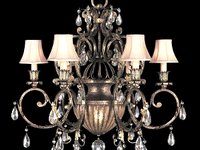1
1
2
5
3
4
4
24-hour nurses’ station
planning example
The lighting of a 24-hour nurses’ station must meet many
requirements. This area must be suitable for offi ce work
as well as for communicative exchange. Furthermore, the
night-time lighting situation must be set. Therefore, we
selected an HCL design for this example. Human Centric
Lighting meets both the minimum requirements for the
respective visual task and also fulfi ls biological needs, in
our case those of 50-year-old caregivers. Furthermore,
emotional lighting components must also be available. To
meet emotional needs, we have chosen a dynamic lighting
control system that off ers a very high colour rendering of
Ra / Re ≥ 90 across all colour temperatures. On the walls,
narrow-beam CWD spotlights produce a cosy atmosphere
at off -peak times.
During the night, the colour temperature is reduced to
≤ 2700 K. The workplace lighting can be adjusted as desi-
red via a dimmer. In the corridor area, illuminance can be
reduced to 50 lx.
Lighting standard EN 12646-1 minimum requirement
• For the workplace, the requirements of an offi ce are
used, and for the area around the base, the require-
ments of a corridor with multiple uses are used
• Floor, wall, and ceiling with minimum illuminance of
≥ 200 lx, ≥ 75 lx and ≥ 50 lx
• ≥ 500 lx are required in the visual task area
• As the nurses’ station is a communication room, a cylin-
drical illuminance of Ez ≥ 150 lx must be available
• Glare limitation UGR ≤ 19
24-hour nurses’ station room dimensions:
Floor area: 40.05 m²
Ceiling height: 3.3 m
Luminaire height: LINEA system 2.35 m
Refl ection
Floor 40 %, walls 80 %, ceiling 90 %
Maintenance factor: 0.8
MEDI lux – what biological illuminance is required vertically
at the resident's eye?
According to DIN/TS 67600, ≥ 250 MEDI lux (Melanopic
Equivalent Daylight Illuminance) must be delivered vertically
on the eye throughout the day. MEDI lux is the melanopic and
daylight equivalent assessed illuminance.
How does one convert to visual lux?
In our example, we assume 4000 K with an MDR of 0.68.
The 250 MEDI lux are divided by the MDER (Melanopic
Daylight Equivalent Ratio) to obtain the required visual
illuminance (250 / 0.68 = 368 lx). This 368 lx is the biologically
necessary vertical illuminance for a 32-year-old standard
observer.
DIN/TS 5031-100 has age-specifi c correction factors for
lens opacity and pupil constriction. Multiplied by this, the
factor for a 50-year-old observer is 0.664. For a 50-year
old observer, 554 lx of vertical illuminance is calculated
[368 lx / 0.664 = 554 lx].
In this example, there is enough vertical illuminance for a
50-year-old caregiver.
Specifi cations
Measured surfaces
1 Floor
2 Ceiling
3 Walls
4 Work area
5 Visual fi eld
72
Healthcare facilities






